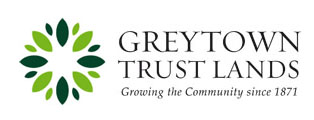Annual Performance Report
The Trust’s Annual General Meeting was held on 24 July. The Chairman of the Board of Trustees, Sid Kempton, provided commentary on the 2019 Performance Report which received an unqualified audit clearance from Moore Stephens Wairarapa Audit. The Performance Report can be viewed by clicking here
Briefly, the Chairman noted the financial year that ended on 31 March 2019 had been a pleasing one. The Trust had maintained an average rate of return on assets of 7%, repaid all outstanding debt and had continued to build equity through property revaluations, while complying with its stated purposes in giving 47% of its operating surplus back to the Greytown community in the form of a dividend.
Community dividend
Last year’s dividend was spread across the range of purposes set out in the Trust’s Act:
- For sports and recreation $140,000. The most significant individual contributions were $43,000 to the Greytown Rugby Football Club, $25,000 to the Greytown Bowls Club and $52,000 to the Greytown Sport & Leisure Society in the form of a subsidy towards the salary cost of its Executive Officer and bulk funding for its member clubs.
- For education $98,000. The principal recipients were Kuranui College, who received $34,000, and Greytown School, who received $32,000. In line with our new education funding strategy, which continues to give financial support for education a high priority, a further $23,000 was paid out to early childhood education providers.
- For the community at large $64,000. The most significant grant by far was $35,000 to Cobblestones Museum, the bulk of the remaining funding being spread across a number of deserving organisations who do good work in the local community.
Property
On the back of a still buoyant local commercial property market driven in part by the availability of increasingly lower borrowing interest rates the Trust has this year negotiated agreements for sale of further land as part of a planned process of accumulating funds to assist in the modernisation of the Trust’s property portfolio. The land concerned represents the last of the vacant lots in our Arbor Place subdivision which, once they have been developed, will finally see it reaching full occupancy.
Moving forward, Trustees now face the task of developing an implementation programme that will guide the approach the Trust will follow when deciding which properties should be replaced, refurbished or upgraded.
Sports facilities
The Trust has continued to work to try to bring about improvement in local sports facilities provision, as a partner involved in a proposal to develop a community sports hub based at Kuranui College. Progress has been made over the past 12 months with the completion of a feasibility report that indicated the proposal is viable. However, the initiative recently reached a critical juncture, requiring funding decisions to be made by key project partners in particular South Wairarapa District Council.
Future direction
A special general meeting was called in April this year to communicate the outcome of the Trustees’ deliberations leading to the adoption by the Board of a 2019/20 annual plan budget that reflects some significant planning changes from previous years. There was a very large turnout from the community wanting to hear what the Trust had to say and it was extremely encouraging to experience such a high level of engagement from all concerned around the difficult topic of the Trust’s financial future.
The Trust had been sending the message to the community for a while now that the time would be coming when Trustees would be faced with having to spend money on maintaining and growing the Trust’s ageing property asset base to ensure future generations could continue to benefit from the revenue it raises. This would inevitably have an adverse impact on the level of annual dividend the Trust has been fortunate enough to have been be able to distribute in recent times.
The current Board believed that time had come and the Chairman explained at the meeting why, in order to secure the long term benefits arising from development of a modern and hopefully expanded property portfolio, the community would have to come to terms with the Trust paying out a lower dividend from 2019/20 onwards.
The majority of views expressed at the meeting were not only supportive of what the Trust had done for the community over many years but also acknowledged the financial position in which the Trust finds itself and were understanding of the difficult decisions the Board has had to make and will continue to make to ensure the Trust remains viable for another 150 years.
